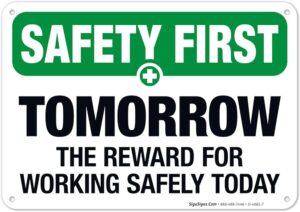
It is fascinating to look at the agenda of the proposed AIHS-FlourishDX PHS Con (https://safetyrisk.net/the-aihs-phs-con/) and see nothing that tackles the underlying ideologies that amplify mental health issues. None of the myths that foster cultural toxicity get a mention. Whilst it may be helpful to tackle the outcomes of stress and burnout or investigate hazards at work, much of the underlying methodologies/philosophies that drive toxicity are left untouched.
Gabor Mate states:
“We are steeped in the normalized myth that we are, each of us, mere individuals striving to attain private goals. The more we define ourselves that way, the more estranged we become from vital aspects of who we are and what we need to be healthy” p. 287. (Gabor Maté, The Myth of Normal).
When we define culture as ‘what we DO around here’ we lose the ability to discern non-behaviourist things that erode social-psychological well-being and the artefacts of culture that toxify relationships at work. This silly simplistic definition of culture is a lazy and dangerous foundation upon which to discern psychosocial risk. This behaviourist definition of culture shifts the focus away from a real understanding of cultural threats that create toxic environments. This is how we end up with Safety telling us to not talk about it.
The key to understanding culture is not discovered in what we DO? Similarly, it is not discovered in some list of propositions projected by chemical engineering.
Culture is not about the sum of behaviours and neither is culture changed by shifting structure (https://safetyrisk.net/structure-does-not-create-culture/). Such myths help keep Safety busy about changing nothing. When the best you can muster is that ‘structure changes culture’ (Hopkins) and then call it ‘thought leadership’, you really have lost the plot on what culture is. Culture is much larger than silly projections on structure (https://safetyrisk.net/culture-about-much-more-than-structure/) or behaviours. These silly projections may appeal to the wish for measurables in safety but they have little to do with culture.
How strange to shift the deck chairs on the Titanic of culture hoping that something might change. How strange to tinker with surface issues and leave underlying ideologies untouched! How strange to not tackle prevailing myths in safety that harm people! This is what is set out for the PHS Con (https://psychhealthandsafetyconference.com/).
Just look at the program and see if there is anything about the culture of safety and how it harms persons (https://safetyrisk.net/ohs-voices-from-the-resistance-rosa-carrillo/). It’s not there. Just look for any mention of zero and how it toxifies safety. It’s not there. Just look for any mention of underlying ideologies that create harm. They are not there. But make sure you fill the program with Tier 1 company case studies – the worst offenders of harm masked as good.
Burnout is not the problem with the nature of mental health issues, it is the underlying philosophies accepted as normal (read The Myth of Normal – https://safetyrisk.net/the-myth-of-normal/).
And how does such a conference conclude? Of course, with a regulators panel as the great sponsors of zero (https://safetyrisk.net/the-sponsors-of-zero-are/).
There is nothing that brutalises persons more in any organisation than the ideology of zero (https://www.humandymensions.com/product/zero-the-great-safety-delusion/). There is nothing more destructive in safety than expecting perfection from fallible people. When you make zero centre stage for safety (https://visionzero.global/vision-zero-takes-centre-stage-world-congress) you put in place the pathway to toxicity in culture.
Any organisation that idolizes the discourse of zero, harms its own people.
The ideology of zero creates an underlying expectation that perfection and the impossible are good goals for fallible people (https://safetyrisk.net/zero-harm-the-maintenance-of-a-dangerous-idea/).
Zero helps promote WIIFM culture so that, safety is all about metrics, counting, controlling hazards, paperwork, checklists and spin. This is how individualism fuels distraction from what matters.
If you want to know about what matters in enabling Everyday Social Resilience (https://www.humandymensions.com/product/everyday-social-resilience-being-in-risk/) and what ideologies harm people, the book is for free download. If you want to know a social relational method for tackling culture and risk then there are positive practical methods to help (https://www.humandymensions.com/product/spor-and-semiotics/). If you want to move away from zero so that safety can improve (https://safetyrisk.net/moving-away-from-zero-so-that-safety-improves/) you can read about how it works here (https://www.humandymensions.com/product/it-works-a-new-approach-to-risk-and-safety-book-for-free-download/).



Do you have any thoughts? Please share them below